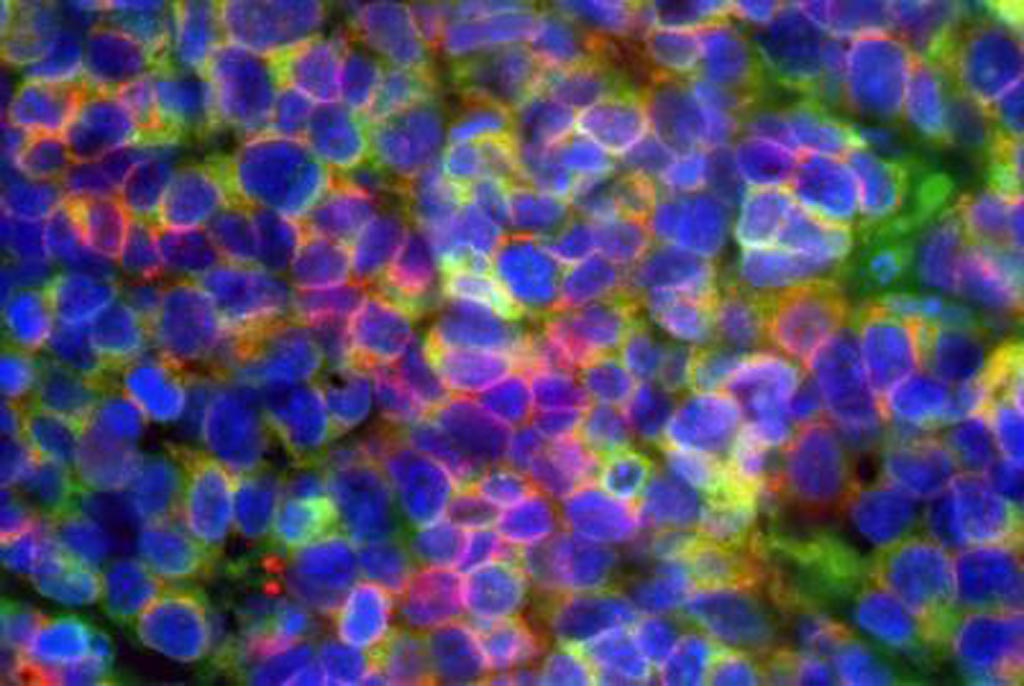Research Determines Why Different Cancers Display Similar Profiles
By LabMedica International staff writers
Posted on 17 Oct 2018
A team of cancer researchers has identified a molecular mechanism that may explain why gene expression profiles are similar in late stage cancers from different organs.Posted on 17 Oct 2018
The use of modern chemotherapeutic techniques to treat epithelial cancers leads to the development of multiple resistance mechanisms, including the generation of highly aggressive, small cell neuroendocrine carcinoma (SCNC). SCNC patients have a poor prognosis due in part to a limited understanding of the molecular mechanisms driving this malignancy and the lack of effective treatments. In particular, whether distinct cancer types accomplish this “reprogramming” through the same mechanism has been unclear.

Image: A photomicrograph of small cell neuroendocrine prostate cancer: cancer cells are seen expressing diagnostic prostate cancer markers in green and red (blue color indicates the cell nucleus) (Photo courtesy of Jung Wook Park & Owen Witte, University of California, Los Angeles).
Investigators at the University of California, Los Angeles (USA) reported in the October 5, 2018, issue of the journal Science that while healthy prostate and lung cells have very different patterns of gene expression, they display almost identical patterns when they transform into small cell cancers.
The investigators found that a common set of defined oncogenic drivers reproducibly reprogrammed normal human prostate and lung epithelial cells and transformed them into small cell prostate cancer (SCPC) and small cell lung cancer (SCLC), respectively. They identified shared active transcription factor binding regions in the reprogrammed prostate and lung SCNCs by integrative analyses of epigenetic and transcriptional landscapes.
"Small cell cancers of the lung, prostate, bladder, and other tissues were long thought to be similar in name alone - and they were treated by oncologists as different entities," said senior author Dr. Owen Witte, professor of microbiology, immunology, and molecular genetics at the University of California, Los Angeles. "Over the past few years, though, researchers have increasingly begun to realize that there are similarities in the cancers, and that's what our work confirms. Our study revealed shared "master gene regulators" - the key proteins that control expression of multiple genes in small cell cancer cells. Studying the network of the master gene regulators could lead to a new way of combating deadly cancers."
Overall, the results presented in this study suggest that neuroendocrine cancers arising from distinct epithelial tissues may share common vulnerabilities that could be exploited for the development of new drugs to treat SCNCs.
Related Links:
University of California, Los Angeles













